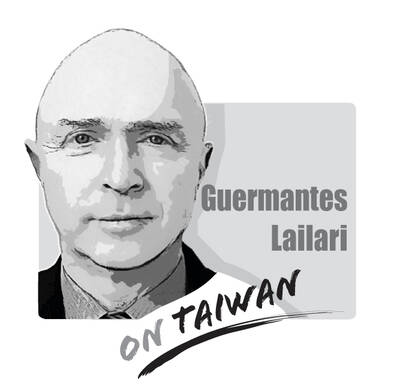Albert Schweitzer once said: “Man can hardly even recognize the devils of his own creation.”
Thanks to the research of many academics and advances in technology, the devils can no longer be concealed.
When incense is burned, heavy metals are released and the ashes contain a certain percentage of lead. In other words, most of the lead is released into the air. A study of kindergarten students across the nation shows that the more frequently a family burns incense, the higher the levels of lead in the blood of the children in the family.
Burning joss paper and incense releases benzene, toluene, nitrogen oxide, sulfur oxide, nitrogen monoxide and particulate matter (PM). On the first and 15th day of every lunar month, the presence of PM1.0 in the air can rise as high as 432.9 micrograms per cubic meter.
Firecrackers also create noise pollution. The noise levels of firecrackers can reach 130 decibels, which can cause permanent hearing loss.
One study has shown a higher incidence of cardiovascular and respiratory diseases during and a few days after the Yanshui Beehive Fireworks Festival in Tainan compared with normal days. After firecrackers were set off high in the air during the Lantern Festival in Kaohsiung, readings at measuring stations on the lee side showed that the levels of four metals — magnesium, potassium, strontium and lead — were 10 times higher than background levels.
According to a report by the Chinese-language Liberty Times (the Taipei Times’ sister newspaper), when the Dajia Matsu Pilgrimage passed through Changhua, worshipers let off loads of firecrackers to welcome the deity. The report said that wherever the palanquin bearing the goddess’ statue went, the air quality was unbearable, with some worshipers setting off firecrackers that enveloped the area like a spider web.
The practice of Matsu worship started more than a century ago as immigrants to Taiwan sought help from the goddess when faced with rough weather when crossing the Taiwan Strait, frequent battles between different ethnic groups and the spread of infectious diseases. Of these three, only the air problem remains today — in the shape of the PM2.5 air pollution that no one can escape from. The harm caused by PM2.5 to life is like the devil’s miasma.
As early as 2010, the Environmental Protection Administration and the organizers of the Dajia Matsu Pilgrimage jointly called for an environmentally friendly pilgrimage. However, some worshipers still went on a firecracker-lighting spree to interrupt the progression of Matsu’s palanquin for their personal gain, in a way using the very problems that Matsu wanted to help them get rid off to welcome it.
This not only places a heavy burden on devotees carrying the palanquin and the police to maintain order during the procession, it also does a lot of harm to worshipers who joined the pilgrimage hoping to be cured of some illnesses through this religious ritual and to the residents living along the pilgrimage’s route.
Social responsibility should be an important part of festivals and cultural events. The hosts or organizers of the Matsu pilgrimage should encourage followers to burn “mental” incense, use environmentally friendly joss paper and set off environmentally friendly firecrackers. To deliver their message more effectively, they should say, on behalf of Matsu, that devotees should realize that using the devil’s ways to welcome the deity is harmful to oneself and to others — and that it will not bring blessings from Matsu.
Chien Jien-wen is a pediatrician at Changhua Christian Hospital and a member of Taiwan Clean Air Network.
Translated by Ethan Zhan

Chinese state-owned companies COSCO Shipping Corporation and China Merchants have a 30 percent stake in Kaohsiung Port’s Kao Ming Container Terminal (Terminal No. 6) and COSCO leases Berths 65 and 66. It is extremely dangerous to allow Chinese companies or state-owned companies to operate critical infrastructure. Deterrence theorists are familiar with the concepts of deterrence “by punishment” and “by denial.” Deterrence by punishment threatens an aggressor with prohibitive costs (like retaliation or sanctions) that outweigh the benefits of their action, while deterrence by denial aims to make an attack so difficult that it becomes pointless. Elbridge Colby, currently serving as the Under
The Ministry of the Interior on Thursday last week said it ordered Internet service providers to block access to Chinese social media platform Xiaohongshu (小紅書, also known as RedNote in English) for a year, citing security risks and more than 1,700 alleged fraud cases on the platform since last year. The order took effect immediately, abruptly affecting more than 3 million users in Taiwan, and sparked discussions among politicians, online influencers and the public. The platform is often described as China’s version of Instagram or Pinterest, combining visual social media with e-commerce, and its users are predominantly young urban women,
Most Hong Kongers ignored the elections for its Legislative Council (LegCo) in 2021 and did so once again on Sunday. Unlike in 2021, moderate democrats who pledged their allegiance to Beijing were absent from the ballots this year. The electoral system overhaul is apparent revenge by Beijing for the democracy movement. On Sunday, the Hong Kong “patriots-only” election of the LegCo had a record-low turnout in the five geographical constituencies, with only 1.3 million people casting their ballots on the only seats that most Hong Kongers are eligible to vote for. Blank and invalid votes were up 50 percent from the previous
Japanese Prime Minister Sanae Takaichi lit a fuse the moment she declared that trouble for Taiwan means trouble for Japan. Beijing roared, Tokyo braced and like a plot twist nobody expected that early in the story, US President Donald Trump suddenly picked up the phone to talk to her. For a man who normally prefers to keep Asia guessing, the move itself was striking. What followed was even more intriguing. No one outside the room knows the exact phrasing, the tone or the diplomatic eyebrow raises exchanged, but the broad takeaway circulating among people familiar with the call was this: Trump did